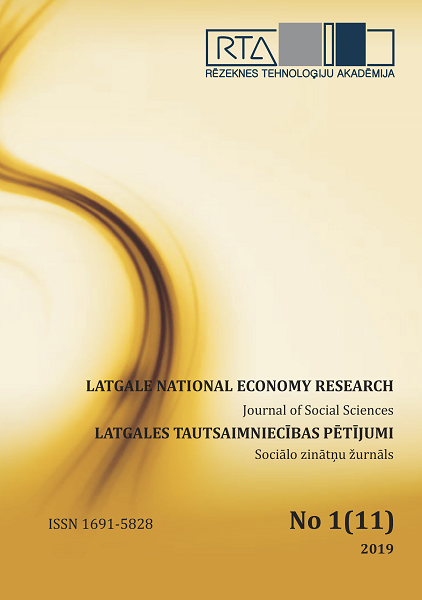THEORETICAL ASPECTS OF THE CONCEPT OF COMMUNITY IN THE CONTEXT OF SOCIAL SCIENCES
DOI:
https://doi.org/10.17770/lner2019vol1.11.4244Keywords:
local community, kinds of communities, population, organisationsAbstract
Various world-class research investigations increasingly focus on matters pertaining to the role of local communities. The research aimed to examine the theoretical aspects of the concept of community in the context of social sciences. The research results revealed that community studies was a relatively new field for academics in Latvia, which became relevant after common European Union priorities in community issues were defined. An essential feature of a community is common identity, a common sense of belonging to the locality, human relationships, the environment, culture and values. Most frequently, according to a survey of local residents, a community the respondents felt a sense of belongingness to was a territorial one. The research employed the following methods: monographic, descriptive, graphic, analysis, synthesis as well as a sociological method – questionnaire surveying.References
Bell, C., Howard Newby H. (1971). Community studies: an introduction to the sociology of the local community. London: Allen and Unwin, 73 p.
Blackshaw, T. (2010). Key Concepts in Community Studies. SAGE Publications Ltd, 17 p.
Brager, G., Specht, H, Torczyner, J.L. (1987). Community Organizing. Columbia University Press, 78 p.
Buttimer, A., (1976). Grasping the dynamism of lifeworld. Annals of the Association of American Geographers. Volume 66, pp. 277-292.
Chaskin, R.J. (1997). Perspectives on Neighborhood and Community: A Review of the Literature. Social Service Review, 71(4), pp. 521-547.
FeverBee (community consultancy) (2010). Different Types Of Communities. Retrieved from https://www.feverbee.com/different-types-of communities
Flora, C.B., Flora, J.L. (2012). Rural Communities: Legacy and Change. Westview Press, 7 p.
Kahne, J., Westheimer, J., King, S.H. (1996). Visions of Community and Education in a Diverse Society. Retrieved from https://www.hepg.org/her-home/issues/harvard-educational-review-volume-66-issue-4/herarticle/_248
Lasmane, S. (2002). Communication Ethics. Riga: University of Latvia, 133 p.
Lyotard, J.F. (1984). The Postmodern condition: A report on knowledge. Minneapolis: University of Minnesota Press, 11 p.
National Development Plan (NDP) 2014-2020 (2012). Retrieved from http://polsis.mk.gov.lv/documents/4247
Peterman, W. (2000). Neighborhood Planning and Community - Based Development: The Potential and Limits of Grassroots Action. SAGE Publications, Inc. 208 p.
Šķiņķis, P., Villa, I., Cimdiņš, R., Ušacka, M. (2015). Territorial Human capital and Community Capacity Index. Notebook 4 – an annex for the book New Approaches to Measuring Social Development. Riga: University of Latvia, 7 p.
Sustainable Development Strategy of Latvia (SDSL) until 2030 (Latvija2030). Retrieved from http://www.latvija2030.lv
Wromen, A. (2015). City and community. American Sociological Association. 47 p.
Zobena, A., Ijabs, I. (2015). New Approaches to Measuring Social Development: Individual, Territories, Municipalities, Riga: University of Latvia, 42 p.


